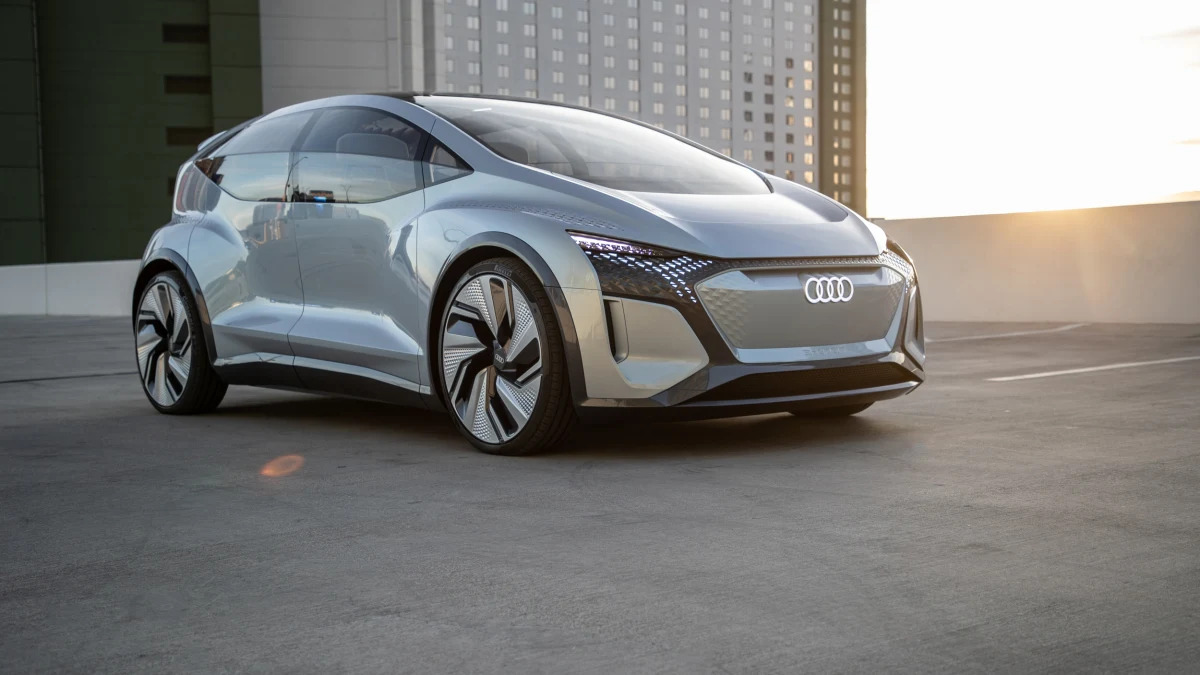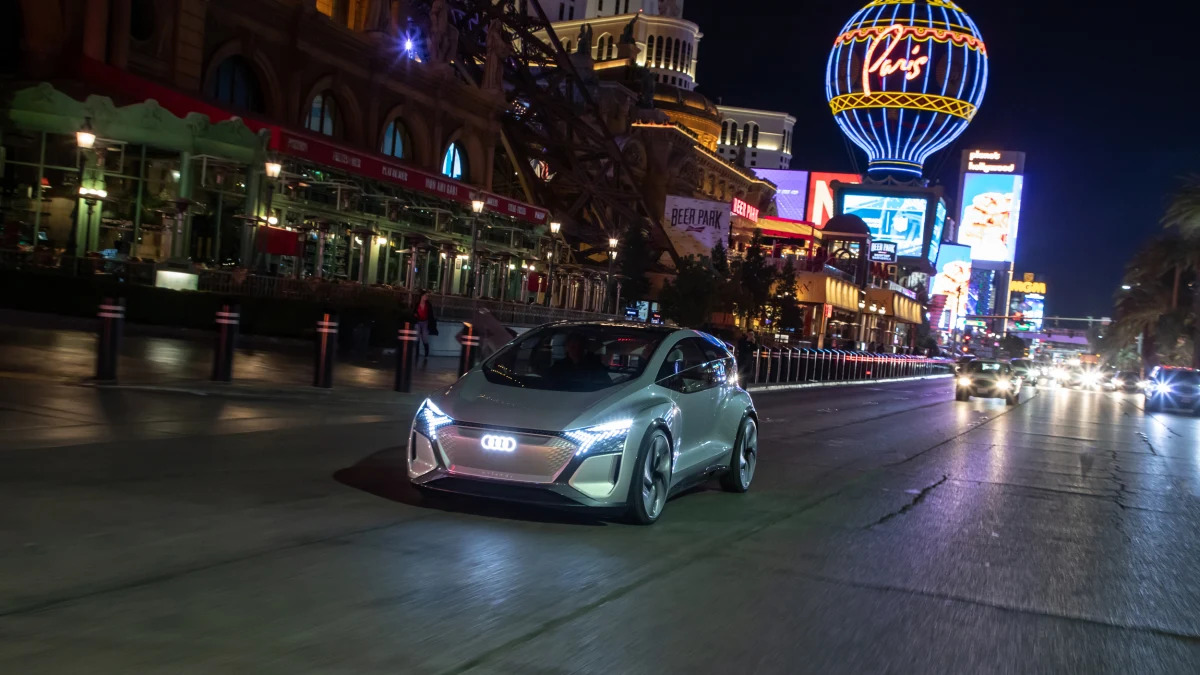LAS VEGAS — Introduced at the 2019 Shanghai auto show, the Audi AI:Me is a one-off concept that's difficult to put a price on. Its value lies deep in seven-digit territory; it's likely worth more than Bugatti's $3 million Chiron. And yet, I didn't think twice about downing a pint of a delicious, locally-brewed cream stout about 30 minutes before Audi let me loose in the Aria hotel's roof-top parking lot. You see, the AI:Me would be doing the driving.
The AI:Me is the final piece in a four-concept puzzle that also includes the luxurious Aicon, the sporty AI:Race, and the off-road-ready AI:Trail. It's the city-friendly member of the bunch developed to thrive in megacities that make Las Vegas look like a quaint, cozy village nestled deep in the countryside. It reminds me of a modern-day successor to the A2 released in Europe in 1999, and of what Audi's answer to the BMW i3 could look like. It's lower and far wider than it looks in photos, and interior designer Immo Redeker told me it's not based on the new MEB platform parent company Volkswagen developed specifically to underpin electric cars. The widespread rumors claiming the concept is essentially Audi's version of the Golf-sized ID.3 are untrue; it's its own thing.
Stylists purposely avoided creating too many connections between the AI:Me and Audi's current design language. It has a hexagonal grille, but don't look for discreet references to the flame-belching Quattro that dominated the rally scene during the 1980s. It's high-tech, yet approachable. Individual lights integrated into the horizontal parts of the car's body characterize its futuristic design. They're there to communicate with other road users, like semi trucks, cyclists, and, in Sin City, clumsy tourists with a yard of margarita in one hand and a smartphone in another. They might miss the standard turn signals, but big streaks of flashing lights are bound to capture their attention.
Front-hinged front doors and rear-hinged rear doors swing slowly open to reveal an interior whose cavernous dimensions are made possible by the electric powertrain. It's far more spacious than you'd expect considering the car's 169-inch length. It rides on a 109-inch wheelbase. To add context, it's as long as an eighth-generation Volkswagen Golf, yet its wheelbase is on par with a two-door A5's. This layout augments the spaciousness perceived when looking into the cabin from the outside. Redeker pointed out his team eschewed materials normally found in a car, like soft-touch plastics, and instead used cloth and wood to achieve a living room-like feel. It sounds cliche, everyone is turning the car into a lounge on wheels, but Audi pulled it off surprisingly well. The AI:Me is a comfortable, relaxing place in which to travel thanks in part to its large windows, which are sharply curved to emphasize an almost bubble-like roominess.
Ride quality and NVH fly out the window in a concept car. Audi instead focused on the AI:Me's infotainment system, which previews a technological leap it could make in the not-too-distant future. There's no center stack. Instead, a thin screen that's as wide as the windshield and right below it allows the front passengers to navigate the software. The car knows what you're looking at thanks to eye-tracking technology, and it selects an icon if you ogle it long enough. As I stared to order a glazed doughnut, which waited for me at the end of the test ride, the AI:Me relied on alien-like signs to autonomously meander across the Aria's parking lot. It almost felt like riding on a train, because I sat in the driver-turned-passenger seat with a wood table facing me and a big window to my left. Audi kept mum about the powertrain, revealing only that it's battery-powered and rear-wheel drive.
If built, the AI:Me would slot towards the bottom of the Audi range, though pricing and positioning likely won't matter to its target audience. Audi envisions it as part of a broad car-sharing program that lets individuals book a car whenever it's convenient to have one, and not worry about it the rest of the time. We're not there yet, car-sharing programs face a rather unsavory future in the United States, and the AI:Me hasn't received the green light for production yet. Redeker told me some of the technology baked in it could reach showrooms sooner rather than later, like the sound bar that stretches across the entire width of the dashboard, and the top-mounted lights.
The autonomous technology is on its way to production, too, but there's no telling when it will be ready to merge into the mainstream. 2022? 2032? It's not entirely up to Audi. Take the matrix beam lights available on some models in Europe, for example. The technology exists, it's being sold to normal motorists across the pond as you read this, yet it remains perfectly illegal in the United States. Autonomous technology could find itself stuck in a similar pickle while lawmakers around the world figure out what to make of it, and how to regulate it. It will inevitably arrive, and when it does, look forward to relaxing, playing a virtual reality-based video game, or, realistically, working on your way home from work.











Sign in to post
Please sign in to leave a comment.
Continue